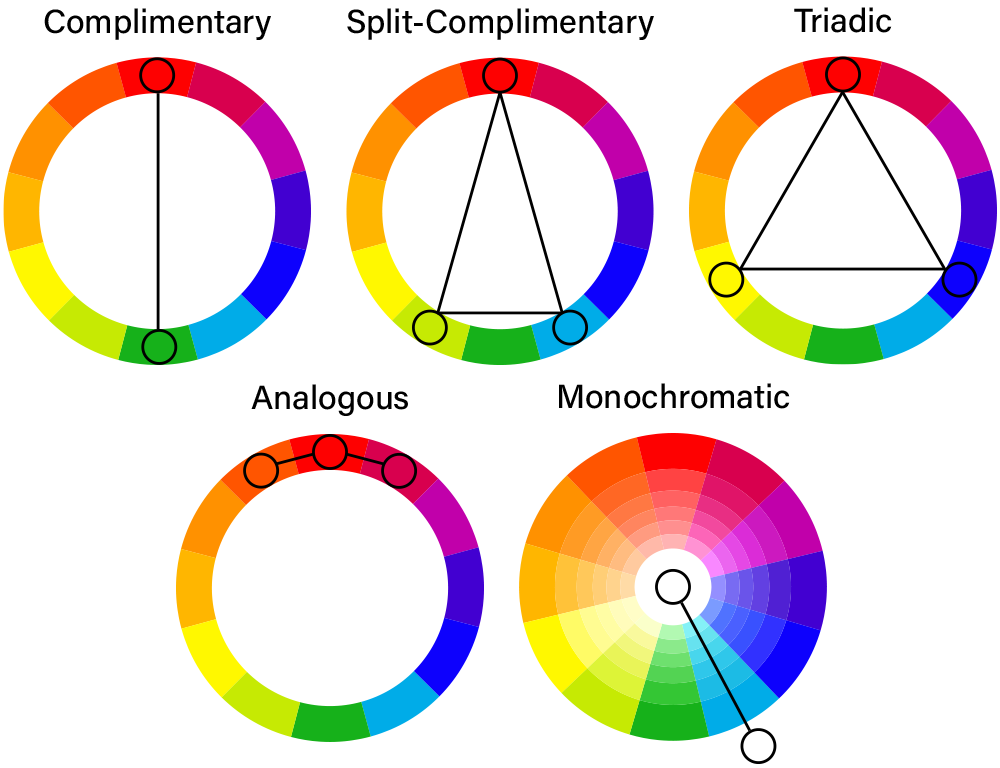Essential Knowledge - Colour Theory
Just as music brings joy to our ears, colour brings joy to our eyes. It brings a picture to life, stirs our emotions and gives a painting a certain atmosphere. Knowing how to mix and alter colours is an essential skill for artists, as well as knowing which colours work well together.
Hue : The name we give a colour, such as red, green or brown
Pigment : The natural or artificial material a colour is made from. Pigment is usually combined with a binder to make a medium.
Saturation : How intense a colour is. A pure colour is intense and bright. Intensity is lost when other colours are added. The opposite of saturated is muted, subtle or washed-out.
Value : How light or dark something is. Different colours have different values, for example ultramarine blue is dark, lemon yellow is light. Adding black makes a shade, adding white creates a tint and adding grey makes a tone.
Colours can be mixed together to make other colours. There are thousands of possible combinations, as there are lots of variations on each hue. The starting point is knowing the primary, secondary and tertiary colours. Primary - red blue, yellow. These colours cannot be created using other colours. Secondary - orange, green, purple. These can be made by mixing two primaries together, such as red and yellow to make orange. Tertiary - red-orange, yellow-orange, blue-green, yellow-green, blue-purple, red-purple. These are made by adjusting the proportions of the two primaries, for example a red-orange has more red than yellow, and a yellow-orange has more yellow than red.
The colour wheel is a representation of all of the primary, secondary and tertiary colours in circular form, so that each colour is the product of the two either side of it. It’s also useful for working out which colours go well together. In simple terms, red, yellow and orange are warm colours, and green, blue and purple are cool colours. However, it’s all relative! For example, you can have a warm red (such as vermillion) and a cool red (such as crimson). By mixing warm primaries together you will achieve a different set of secondaries and tertiaries than by mixing cool primaries. And by mixing a warm primary with a cool primary you'll get a different result again. The best way to learn how colours work is to experiment. Make yourself colour charts that you can refer back to, and you’ll see the almost endless possibilities of colour mixing!
Colour Harmony
Certain colour combinations seem to go well together:
Complimentary colours are opposite each other on the colour wheel
Spilt Complimentaries use a base colour and the two colours either side of its opposite colour
Analogous colours are next to each other on the colour wheel
Monochromatic colours are tints and shades of the same colour
Triadic colours are found on each point of a triangle placed on the colour wheel
Black, White & Neutral Colours
Greys and browns are known as neutral colours. Greys can be made by mixing white with 2 opposites. Browns are made by mixing all 3 primary colours together. White can come in different forms, some more opaque than others. eg Titanium white tends to be opaque, whereas Zinc white (known as Chinese white in watercolour) is more translucent. Artists tend to mix their own blacks, rather than using black straight from the tube, which can dominate a painting and look too heavy. Ultramarine & umber work well.



